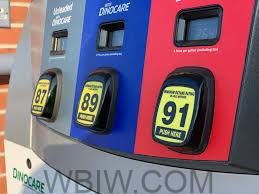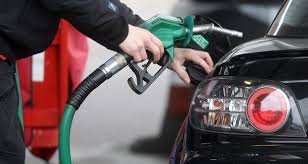
INDIANA – Average gasoline prices in Indiana have fallen 0.3 cents per gallon in the last week, averaging $3.90 a gallon Monday, according to GasBuddy’s survey of 3,271 stations in Indiana. Prices in Indiana are 28.8 cents per gallon lower than a month ago and stand $1.11 a gallon higher than a year ago.
According to GasBuddy price reports, the cheapest station in Indiana was priced at $3.26 a gallon Sunday while the most expensive was $4.89 a gallon a difference of $1.63 a gallon.
Gas prices in Lawrence County range from $3.79 a gallon to $3.89 a gallon.

The national average price of gasoline has risen 4.4 cents per gallon in the last week, averaging $4.11 a gallon Monday. The national average is down 13.3 cents per gallon from a month ago and stands $1.24 a gallon higher than a year ago, according to GasBuddy data compiled from more than 11 million weekly price reports covering over 150,000 gas stations across the country.
Historical gasoline prices in Indiana and the national average going back ten years:
- April 25, 2021: $2.79/g (U.S. Average: $2.87/g)
- April 25, 2020: $1.48/g (U.S. Average: $1.74/g)
- April 25, 2019: $2.92/g (U.S. Average: $2.88/g)
- April 25, 2018: $2.84/g (U.S. Average: $2.79/g)
- April 25, 2017: $2.33/g (U.S. Average: $2.40/g)
- April 25, 2016: $2.17/g (U.S. Average: $2.14/g)
- April 25, 2015: $2.50/g (U.S. Average: $2.52/g)
- April 25, 2014: $3.81/g (U.S. Average: $3.70/g)
- April 25, 2013: $3.67/g (U.S. Average: $3.51/g)
- April 25, 2012: $3.80/g (U.S. Average: $3.83/g)
Neighboring areas and their current gas prices:
- Champaign- $4.33/g, up 7.0 cents per gallon from last week’s $4.26/g.
- Indianapolis- $3.82/g, down 2.2 cents per gallon from last week’s $3.84/g.
- Cincinnati- $3.78/g, down 2.2 cents per gallon from last week’s $3.80/g.

“For the first time in over a month, the national average price of gasoline has risen. Primarily, this was due to oil prices that had jumped the prior week, pushing up the price that stations pay for fuel and thus causing them to raise prices,” said Patrick De Haan, head of petroleum analysis at GasBuddy. “The rise has been quite tame in most areas, while others have continued to gently decline. But, with the French election now behind us, there is risk that the EU could pursue harsher sanctions on Russia’s energy, which could cause oil prices to rise if it happens – something motorists should be on the watch for. In addition, U.S. oil inventories continue to decline, putting additional pressure on prices as the nation’s SPR continues to drain and Russia’s war on Ukraine remains ongoing. The global imbalance between supply and demand that led to these higher prices continues for the time being.”
GasBuddy is the authoritative voice for gas prices and the only source for station-level data spanning nearly two decades. Unlike AAA’s once daily survey and the Lundberg Survey, updated once every two weeks based on a small fraction of U.S. gasoline stations, GasBuddy’s survey updates 288 times every day from the most diverse list of sources covering nearly 150,000 stations nationwide, the most comprehensive and up-to-date in the country. GasBuddy data is accessible at http://prices.GasBuddy.com.



